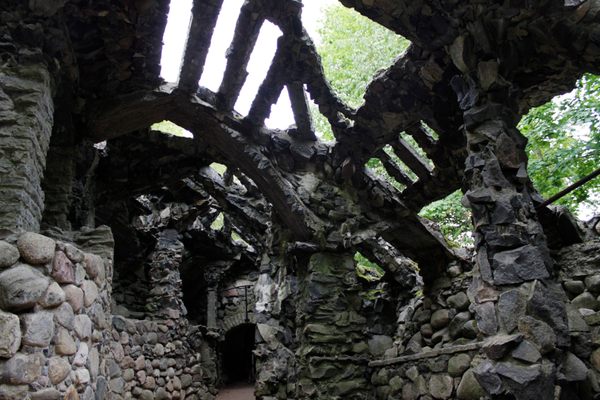About
Located on the outskirts of Tallinn, Glehn Park was developed by an eccentric landowner named Nikolai von Glehn. He designed and built himself a castle on the grounds, which was completed in 1886. At the time it must have been a real treasure of art brut, decorated with eclectic reliefs and a mix of Latin, Greek, French, Russian, and German texts.
Glehn also designed his own furniture, chairs, and tables with carved figurines as decorations. Unfortunately, the whole place was looted during World War I and nothing of the original interior is left. (The building now belongs to a local university and is used for receptions and events.)
Another architectural gem on the grounds is the palm house that stood opposite the castle. It is a half-underground, multiple-story building with a mosaic roof covered with colorful glass panels. It is in ruins today, but it still amazes with its Gaudi-esque style. A little ways further out in the forest you'll also find a small observatory tower.
Still, the most curious aspect of this park may be the sculptures. The most notable of them is a sculpture of a strange horned man. It is often considered to be the Devil, but actually, it is meant to represent a mythical hero of Estonian folklore, named Kalevipoeg.
The Kalevipoeg sculpture is about 33 feet (10 meters) tall and was modeled on the measurements of Glehn himself, upsized four times. The original sculpture was also destroyed during the war, because Russian troops were afraid that the horns were actually a secret transmitter device signaling information to German ships. A restored replica now stands next to the debris of the original. Behind the Kalevipoeg is a sculpture of a crocodile. The pair together was meant to symbolize a beast lurking behind a hero.
Related Tags
Know Before You Go
The Glehn Park Hiking Trail is 1.5 miles (2.45 km) long. It's part of the Nõmme-Harku Health Parks.
Community Contributors
Added By
Published
November 13, 2018




























